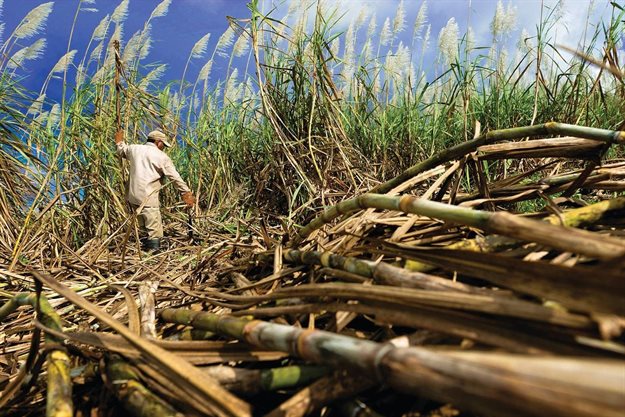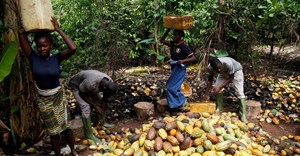Food prices in Nigeria have shot through the roof. But is the pandemic to blame?

The story for Nigeria has been no different. The country has instituted a range of measures to try to curb the pandemic. These have included waves of lockdowns in major cities, border closures and people’s movement being restricted.
These measures have affected all sectors of the economy. But food supply has taken the most severe hit. In a recently published paper I look at what’s happened to food prices in Nigeria. I found that prices had risen dramatically between February and June 2020.
I then set about tracing the reasons for these price hikes. I concluded that the measures taken to contain Covid-19 have indeed had a major impact on food supplies in the country.
But I also found that other factors were behind prices going up even in Nigeria’s best food producing regions. This, I concluded, was due to factors unrelated to Covid-19, such as violent conflict.
Many troubles of the Nigerian farmer
In my paper I identified a number of factors that have had a dramatic effect on the ability of farmers to maintain agricultural output. These include tighter access to credit and the complexities of loan repayments for the farmers, and limited access to farm inputs.
Other factors I identified included how the shutdown of markets and slow transportation networks in Nigeria have resulted in wastage and inadequate food supply. Likewise, the border closure limited food imports, further shrinking the supply chain.
Adding to this complex situation were the lockdown directives. The extension for another two weeks in the key cities resulted in people panic buying to ensure they had supplies of food. This inadvertently led to a rise in the price of food items due to the mismatch of demand and supply.
The consumer price index for food has increased all through the pandemic period. It rose from 14.9% in February 2020 to 15.18% in June 2020, showing an increase of about 0.28% within only four months. It is forecast to increase to 17% by September 2020. This is a considerable rise from 13.39% in July 2019 and 14.09% in October 2019.
The peculiar situation for Nigeria was that the food price increases varied across the country. Some states felt the hit of food price inflation harshest. In Sokoto (northwest Nigeria) prices went up year on year by 17.12%, in Plateau (north central) by 16.99%, Gombe (northeast) 16.96%, Edo (south-south) 16.71%, and Kano (northwest) 16.45%. The states with the lowest food price rise were Bayelsa (south-south) 11.89%, Katsina (northwest) and Bauchi (northeast) 13%, Nasarawa (north central) 13.5, and Ondo state (southwest region) with 13.53%.
Some of these states are located in major food-producing areas of the country. Sokoto is a major producer of beans, cowpea, groundnut, garlic, wheat, sugarcane, pepper, onions and tomatoes. Groundnut, sorghum, sesame seed, maize, potatoes, tomatoes, onions and pepper are produced extensively in Plateau state. Likewise, Gombe is well known for groundnut, ginger, cowpea, sesame seed, tomatoes and pepper. Plantain, oil palm and cassava is largely produced in Edo State. Also, Kano has extensive production of rice, garlic, sorghum, cowpea, wheat, pepper, onions and tomatoes.
What then could be responsible for the food price hikes in these regions? Could this imply that quite a lot was overlooked even before the pandemic began? What part did other epidemic outbreaks like Lassa fever play for some of the states affected?
Since lower food supply has been related to lower yield per hectare, lower supply of seedlings, fertilisers, and other inputs, what then makes the conditions rather dire for Nigeria?
I postulated in my report that a likely indicator for food price hikes, especially in the worst-hit states, was the continual violent conflicts that characterise the northern region of the country.
The role of conflict
Insurgency, conflict and displacement had been topical for six years in northern Nigeria. Displacement of farming communities led to a decline in the cultivation of arable farmland, resulting in lower yield per hectare of agricultural land.
These displaced communities also needed care and food supplies. This further increased the strain on food demand.
Communal clashes, banditry and farmer-herder conflicts in the north-central region of Nigeria continue unabated and are now spreading to neighbouring states. The situation is fast becoming a critical challenge.
These dire conditions have been compounded by the pandemic.
What next?
Food price inflation is not likely to improve anytime soon if the predicaments facing parts of the country remain unresolved. This will be true even if economic activity gradually picks up with the easing of lockdown restrictions.
Nigeria is endowed with good arable land, weather and water supply and has the potential to be self-sufficient in food production. The country could even go beyond sufficiency and become a valued exporter of food.
The inflow of foreign investment and technology in the sector would enhance this potential and improve the output of domestic industry.
This would improve Nigeria’s food security and earn the country a better position in its balance of payments, which is required to improve economic welfare and people’s livelihood.
This article is republished from The Conversation under a Creative Commons license. Read the original article.![]()
Source: The Conversation Africa

The Conversation Africa is an independent source of news and views from the academic and research community. Its aim is to promote better understanding of current affairs and complex issues, and allow for a better quality of public discourse and conversation.
Go to: https://theconversation.com/africa






















